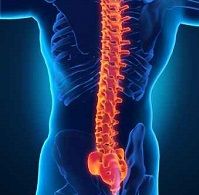Article
Spinal Cord Stimulation Provides Optimal Chronic Pain Relief
Author(s):
Research indicates that spinal cord stimulation appears to reduce the affective component of pain, resulting in optimal pain relief.

Ohio State University (OSU) research indicates that spinal cord stimulation appears to reduce the affective component of pain, resulting in optimal pain relief. The study investigators, from the OSU Wexner Medical Center, found a “decreased connectivity between somatosensory and limbic areas associated with optimal pain relief due to spinal cord stimulation.”
The study results were published as the cover article and Editor’s Choice in the February 2016 issue of Neuromodulation: Technology at the Neural Interface.
“Our initial study provides insights into the role of the brain's emotional networks in relieving chronic pain. We are the first to show that therapeutic spinal cord stimulation can reduce the emotional connectivity and processing in certain areas of the brain in those with chronic pain,” said principal investigator Ali R. Rezai, MD, Stanley D. and Joan H. Ross Chair in Neuromodulation; Professor of Neurosurgery and Neuroscience; and Director of the Center for Neuromodulation and Neuroscience Program at OSU. “Being able to modulate the connections between the brain areas involved in emotions and those linked to sensations may be an important mechanism involved in pain relief linked to spinal cord stimulation.”
The study builds off prior study findings proposing the neuromatrix theory of pain, the idea that pain perception varies according to cognitive, emotional, and sensory influences.
<!--page-->
The study was also conducted with the understanding that the default mode network (DMN)—the resting state network of the brain that is instrumental in the cognitive and emotional aspects of pain perception—is associated with functional connectivity hubs and brain networks, as well as an understanding that DMN is abnormal in chronic pain sufferers.
For the study, thoracic epidural spinal cord stimulators were implanted in 10 patients with complex regional pain syndrome or neuropathic leg pain. Rezai and colleagues evaluated stimulation parameters associated with “optimal” pain reduction prior to imaging studies.
The investigators write that “significant differences in resting state connectivity between [spinal cord stimulation] off and optimal state were seen between several regions related to pain perception, including the left frontal insula, right primary and secondary somatosensory cortices, as well as in regions involved in the DMN, such as the precuneus.” The team also found that optimal spinal cord stimulation decreased connection strength between somatosensory and limbic areas but increased connection strength between somatosensory and DMN, resulting in pain relief.
“By using functional magnetic resonance imaging (fMRI), we mapped the areas of the brain involved in pain perception and modulation,” said lead author Milind Deogaonkar, MBBS, associate professor in the Department of Neurological Surgery of the College of Medicine at OSU. “If we can understand neural networks implicated in the pathophysiology of pain, then we can develop new therapies to manage chronic persistent pain.”





